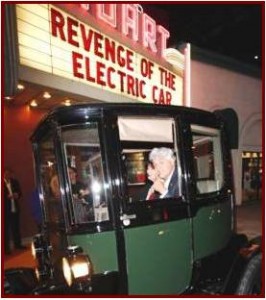
Another twist on the revenge of the electric car as Volt fires cause concern? There have been few Volt accidents, and no in-use fires reported by owners. There appears to be no immediate fire risk, while fires in gasoline fueled cars happen all the time.
General Motors announced Monday that any Volt owner concerned about safety can contact his or her Volt adviser to arrange for a free GM vehicle loan until resolution of the issue. A letter to 6,000 Volt owners will go out today. The aggressive customer satisfaction move came after the National Highway traffic Safety Administration announced on Friday that it would open a preliminary evaluation of Volt battery assemblies after NHTSA test results caused electrical fires seven days or more than three weeks after an initial vehicle New Car Assessment Program side pole crash test.
“We have no customer requests for this – none,” said Mark Reuss, president, GM North America.” The Volt is a five-star safety car. Even though no customer has experienced in the real world what was identified in this latest testing of post-crash situations, we’re taking critical steps to ensure customer satisfaction and safety,” Reuss said. Volt sales and export plans are continuing.
For the past six months, NHTSA research and testing in the United States has been designed to induce electric vehicle battery failure after severe crash situations. The formal investigation came after NHTSA observed two post-crash testing fires emanating from Volt’s lithium ion batteries, the latest occurring last Thursday.
NHTSA said in a statement last Friday that is not aware of any real crashes that have resulted in battery-related fires in Chevrolet Volt models or other vehicles, such as the Nissan Leaf, powered by lithium-ion batteries. Nevertheless, the agency is concerned that damage to the Volt’s batteries as part of three tests “explicitly designed to replicate real-world crash scenarios” have resulted in two fires. (See NHTSA Opens a Formal Defect Investigation into Chevrolet Volt Battery Fires When a Second Fire Occurs After a Crash Test)
Lithium battery safety in a plug-in hybrid, such as Chevrolet Volt, or pure electric automobile, such as Nissan Leaf, is based on a complex series of factors involving not only the battery design, but where it is placed in the vehicle; its discharge and recharge rates; cooling; as well as the software that governs the whole system, including detecting failure modes that cause the computer to disable or shut down the battery.
Since July, GM has implemented a post crash procedure that includes the de-powering of the battery after a severe crash, returning the battery to what it calls a safe and low-powered state.
See:
- Chevrolet Volt Earns 5 Stars in Euro NCAP with No Battery Fires. GM Announces Volt Export Plans to China Next Year
- NHTSA Opens a Formal Defect Investigation into Chevrolet Volt Battery Fires When a Second Fire Occurs After a Crash Test
- Chevrolet Volt Qualifies for California HOV Lanes in 2012
- Chevrolet Volt Fire After Crash Prompts NHTSA Investigation
- Chevrolet and Nissan Succeed with Plug-in Hybrids and EVs as the Business of Plugging In Shows First Product Results

